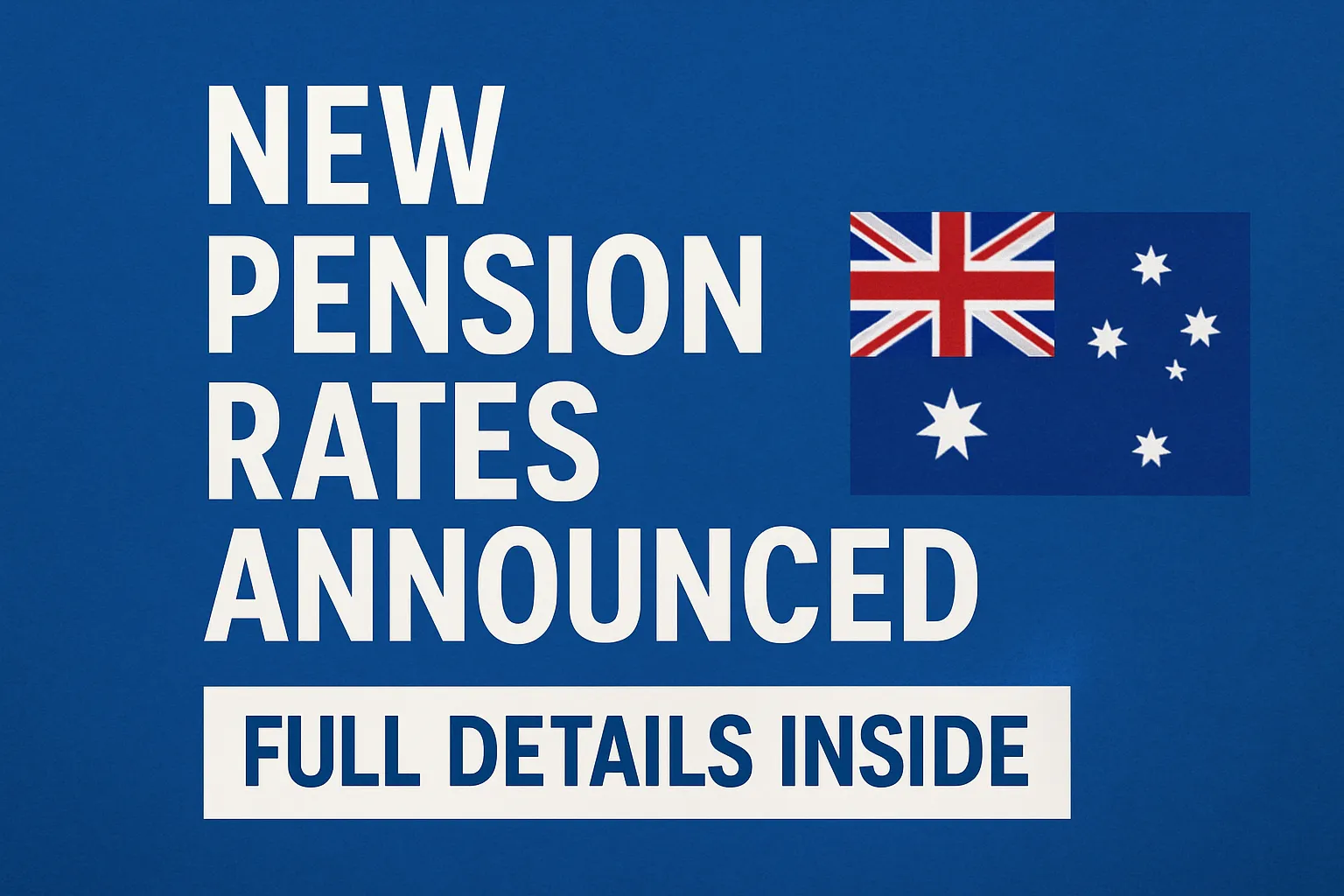Join on WhatsApp
Get the latest updates directly on WhatsApp – motivation, news & more!
The Australian Government has officially increased key pension payments from 20 September 2025, providing much-needed relief to retirees, carers, and people with disabilities as part of its twice-yearly indexation process. The adjustments, effective until 19 March 2026, are designed to help pensioners keep pace with persistent inflation and rising costs of living. Beyond a higher fortnightly payment, the government has also revised the deeming rates and income and asset test thresholds, meaning both current and potential recipients could see meaningful changes in their entitlements.
How Much More Will Pensioners Receive
The largest share of pensioners will immediately see an increase in their fortnightly payments. Single pensioners are receiving about $29.70 more per fortnight, while couples on the full pension are getting $44.80 more combined, or about $22.40 each.
For the next six months, full-rate pension recipients will receive approximately:
- Single pensioners: $1,178.70 per fortnight, equating to about $30,646 annually.
- Couples (each): $888.50 per fortnight, or $23,101 annually. Combined, that means couples will take home around $46,202 per year.
These amounts include standard supplements such as the energy allowance, but exclude rent assistance or any additional targeted support.
Why the Increase Matters
Every six months, the government reviews pension rates in line with inflation and wage growth. This ensures that older Australians and those unable to work due to disability or caregiving responsibilities are not left behind as essential household costs rise. The September 2025 update is notable not only for the base rate lift but also for the parallel changes around deeming and eligibility thresholds—features that directly determine who can access part or full pensions.
Deeming Rates and Financial Assets
A major change effective this September relates to deeming rates, which are used by Centrelink to estimate the return on financial assets such as savings, shares, and managed investments. These assumed earnings can reduce pension amounts.
The revised deeming rates are:
- Lower rate: 0.75%
- Upper rate: 2.75%
For many pensioners with modest savings, this marks an increase from previous years of exceptionally low deeming rates. Those with higher balances are most affected, as Centrelink now assumes greater income from their savings. For example, a couple with substantial investments could see part of their pension reduced due to this higher imputed return.
Updated Income and Asset Test Thresholds
Alongside rate rises, the income and asset test thresholds—the criteria that determine eligibility for full or part pensions—have also been lifted. This is significant for Australians who were just over the old limits.
Some key effects include:
- Australians who previously missed out on any pension due to income or asset limits may now qualify for a part pension.
- Part-pensioners may not see the full benefit of the fortnightly increase because higher deeming rates could offset their gains.
- Full-pensioners clearly benefit the most, with their payments rising directly.
These revised settings provide a small buffer for modestly higher income or asset levels before payments begin to reduce, reflecting the cost pressures faced by retirees who have savings but still struggle with expenses.
Transitional Pension Rates
There are also adjustments to transitional pension rates, which apply to older recipients under rules in place before 2009 reforms. Although fewer Australians remain in this category each year, their payments also shift upward in line with the latest indexation measures.
Who Gains and Who Misses Out
The September 2025 pension increase delivers clear benefits but with varied outcomes depending on individual financial positions.
- Full-rate single pensioners: Direct gain of $29.70 per fortnight, with no offsetting reduction.
- Full-rate couples: Stronger combined gain of $44.80 per fortnight.
- Part-pensioners: Mixed impact—some may see only partial benefit or no real increase due to deeming.
- Those just outside previous eligibility: New thresholds mean some will now gain access to benefits, even if only at a partial rate.
For lower-income retirees reliant on their pension as a near-total source of income, this increase provides straightforward relief. For asset-owning retirees, especially those holding larger superannuation balances or investments, the benefits are more nuanced.
What This Means for Australian Households
The timing of this indexation is particularly relevant given ongoing cost-of-living pressures across energy, housing, and food. Pension payments have to move in step with real-world conditions to prevent financial stress, and while this boost does not erase all pressures, it adds predictability and stability.
For older Australians planning budgets or reassessing eligibility, it is worth checking how the new deeming rates and thresholds apply to personal financial circumstances. Many households may find their payments slightly more complex to predict, especially if they hold moderate to large investments.
Nevertheless, the combination of higher payments, expanded eligibility, and inflation-linked adjustments shows the system’s intent: to balance fiscal discipline with social support for those depending on the Age Pension, Carer Payment, or Disability Support Pension.

